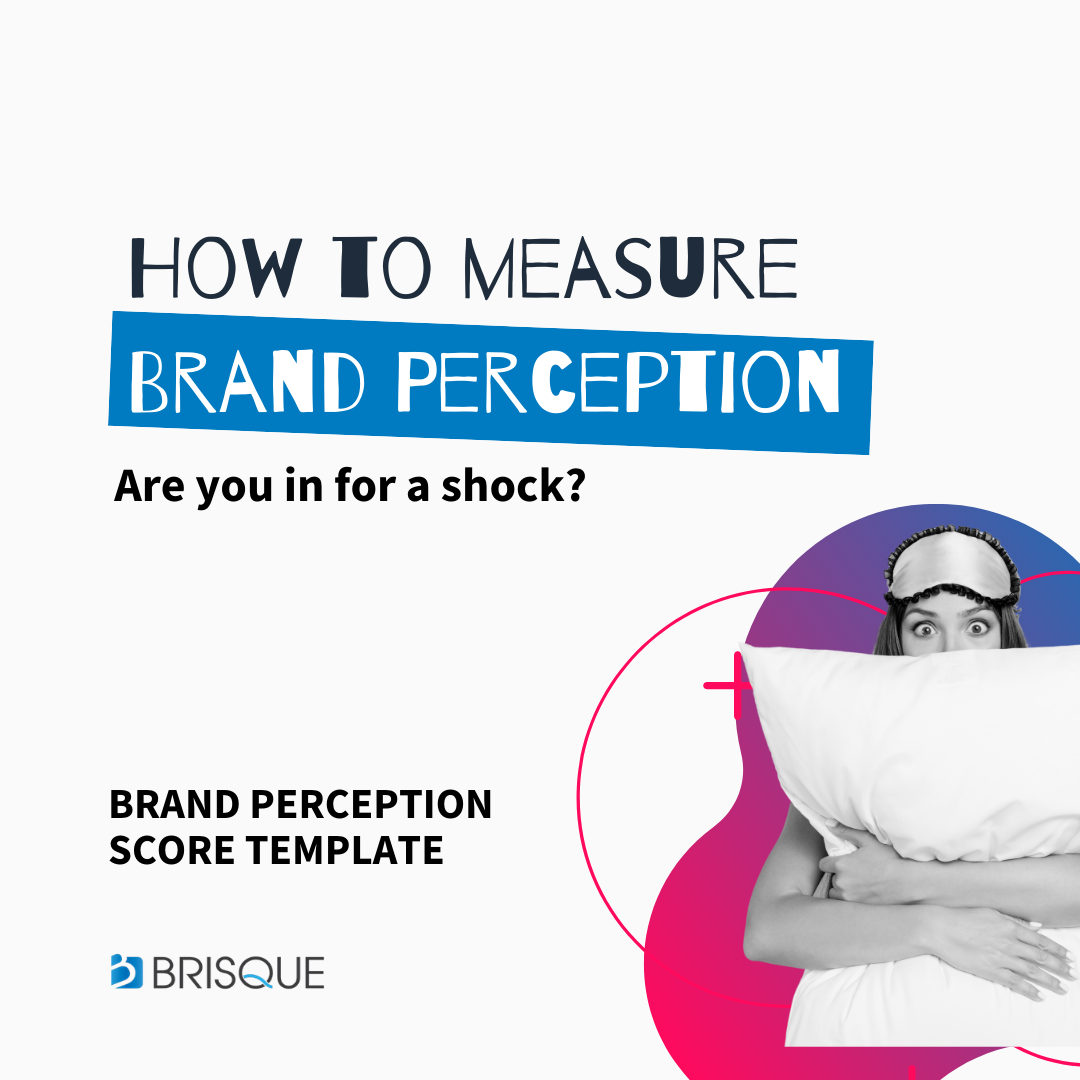In my previous post, I took us back to our good old days of nursery rhymes with the three little pigs to explain the differences between a brand strategy, a marketing strategy, and marketing activities using a simple house analogy. I found that to be one of the easiest ways to understand why a business needs all three marketing initiatives to build a scalable marketing process.
Just in case you missed it, read the post here.
In this foundational post, I’ll focus on explaining the difference between a brand strategy, a marketing strategy, and a marketing activity. I’ll also share some of the essentials to remember as you create your brand strategy, marketing strategy and execute marketing activities.
Related: [Free Template] How to Measure & Score Your Brand Perception
Building a Brand Strategy
What is a brand strategy?
A brand strategy is the mission and vision of a brand. It’s how you plan to position and identify yourself in the marketplace. It encompasses the entire customer experience from learning about your company, to making a purchase, to staying with your company as a customer. A brand strategy is the foundation of a marketing strategy and defines who you’d like to be in the marketplace. Your brand strategy needs to be reinforced every day with every customer interaction. That means your marketing messages that promise what your brand stands for should be experienced in real life by your customers.
Who needs a brand strategy?
A brand strategy is needed by every business regardless of the business size. If you decide not to go through the painstaking process of creating a brand strategy, you’ll still deliver some kind of brand experience to your customers.
I sometimes communicate with startup companies who believe that they don’t need to create a brand strategy yet because they are not ‘big enough.’ The truth is, I would argue that brand strategies are needed the most when you are getting started and want to establish your footing. Additionally, it’s much more challenging to change a brand experience once you establish a culture, intentionally or unintentionally.
I’ll admit that it’s easy to see brand strategies as “great theoretical” documents. There are so many times when I have presented a brand strategy, and everyone loved it. Everyone in the room agreed that we should make the brand strategy our approach moving forward, but it seemed like everyone ended up forgetting by the next day.
By nature, brand strategies are supposed to be comprehensive, and often it comes with the following set of deliverables:
- Brand Story
- Brand Core Message – brand pillars
- Brand Vision & Mission
- Unique Brand Identifier – brand voice, tone & unique association
- Unique Value Proposition
- Brand Positioning
- Marketing Personas/Target Profiles – with elevator pitches
Often once you complete the brand strategy process, you have a lengthy document with valuable information. I suspect that usually, people don’t remember much the day after, just because of how detailed brand strategy documents are. The lengthy document is needed because your brand strategy document needs to serve as a reference point for building your marketing strategy and executing activities.
Since brand strategies are comprehensive, let’s look at some of the most important things to remember when creating your brand strategy.
Here are the three essential things for creating a brand strategy:
- What problem am I solving?
- What don’t I want to have associated with my brand?
- What do I want to be known for?
- What’s the number one reason why customers select me over the competition?
Now, let’s turn our attention to a marketing strategy.
Related: The Real Reason Why You Are Not Building a Scalable Marketing Process
Creating a Marketing Strategy
What is a marketing strategy?
A marketing strategy is the tactic behind every marketing activity. It’s the reason why you perform marketing activities the way you do. A marketing strategy should utilize the brand strategy to achieve your set goals. Every marketing strategy should align with your business and marketing goals. It should have performance measurement metrics to help you know when your approach is working and when you need to change.
A marketing strategy has a bit of an overlap with a brand strategy (rightfully so) as it builds upon the existing brand strategy. It, however, drives the point home even further. For instance, whereas a brand strategy recommends effective marketing channels based on reaching your target customers, a marketing strategy focuses on getting to those people based on specific channels.
A marketing strategy should include the following:
- A marketing channel strategy
- Marketing goals and metrics
- Target persona and marketing strategy for each persona
- How you plan to achieve your set goals
- A tailored marketing strategy approach that showcases the brand strategy
- A marketing overview of activities that can help you achieve your brand vision, business, and marketing goals.
Three essential questions to answer with every marketing strategy:
- What is my point of differentiation that I’m showcasing?
- Which channels am I using to showcase this?
- What metrics (non-revenue based) will show that we are heading in the right direction.
Related: How to Create a Marketing Roadmap
Executing Marketing Activities
What is a marketing activity?
A marketing activity is anything that you do to help you acquire customers. Marketing activities help showcase who your brand is. Every marketing activity should have both a brand and marketing strategy. Marketing activities are the specific set of tasks or actions you undertake to help you acquire customers. Marketing activities aim to create brand awareness, generate leads or direct sales, or retain existing customers using different marketing channels.
The biggest mistake that businesses make early on is to jump into many marketing activities and then wonder why it’s not working for them. “It worked for all the others! Why not us?” Well, that’s an easy question. You are not the others.
Every business is unique. You can’t approach your marketing activities playing copycat. That’s the time that you want to be as creative as possible. However, that’s almost impossible if you haven’t spent the time to create a brand and marketing strategy.
Here are the 3 Essential Items to remember when tackling marketing tasks:
- More is not necessarily better; it’s especially true if you have a low marketing budget. It’s always better to concentrate your efforts than to spread yourself thin.
- Start with the low hanging fruit. If you have customers in a particular industry, it’s tempting to expand into specific industries. However, your efforts might be better spent dominating one niche industry first, then expanding from there.
- Always maintain a high-level view. When you are involved with marketing tasks, you stay in the details, but it’s still essential to have a high-level view of your marketing goals. Creating a marketing roadmap helps you have an aggregate level view of your marketing activities.
Here are some of the types of marketing channels to consider:
- Content Marketing
- Search Engine Optimization
- Pay Per Click Advertising
- Affiliate Marketing
- Social Media Marketing
- Email Marketing
- Public Relations
- Viral Marketing
- Influencer Marketing
- Events
- Direct Mail
In the end, a brand strategy, marketing strategy, and marketing activities are all needed to create an effective marketing process. If you ignore one aspect of the process, it affects the other parts.
They all work hand in hand to ensure that you can get the most out of your marketing efforts.









